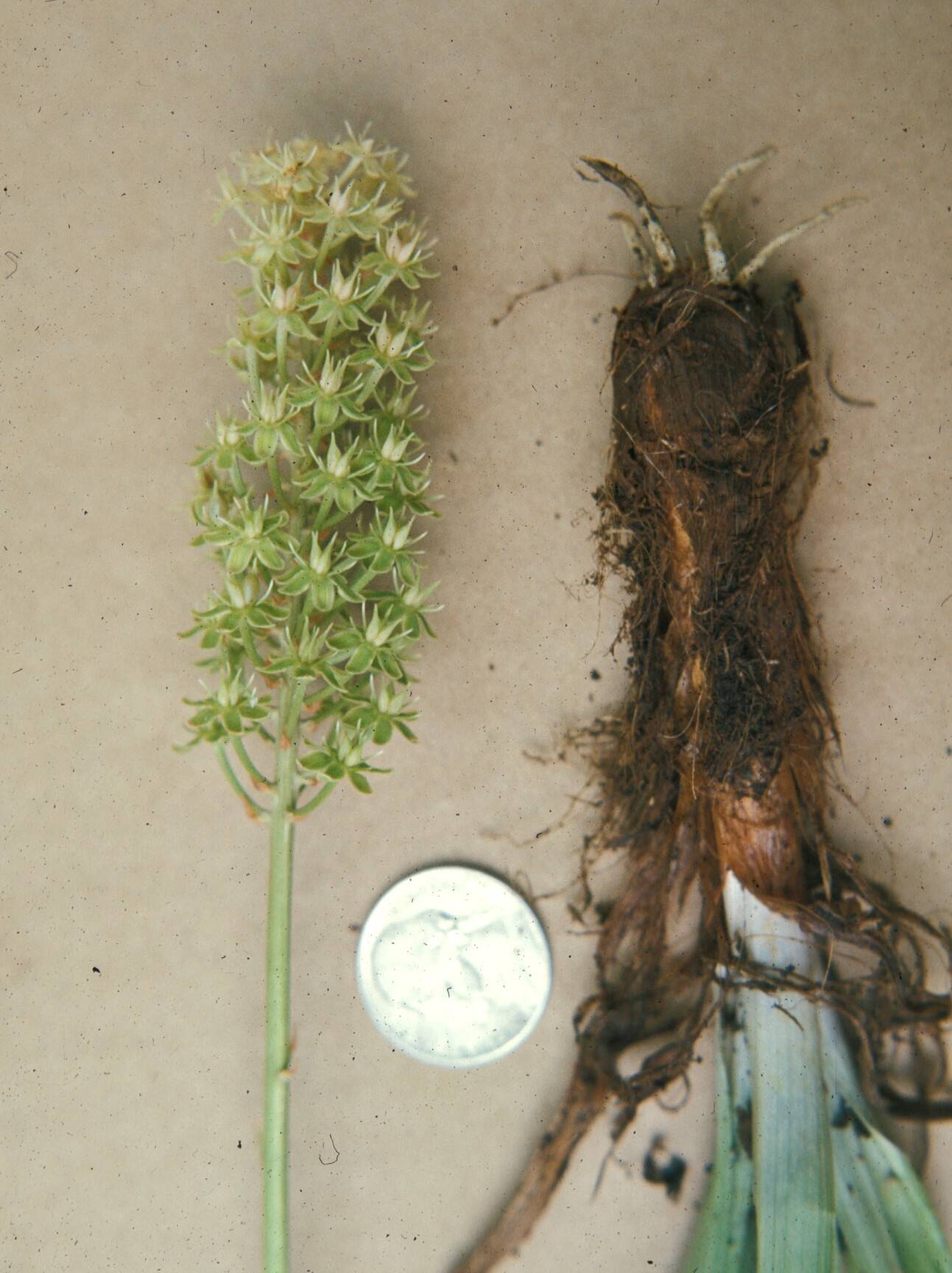Amianthium
|
Family: Melanthiaceae |
Species 1: e North America. Amianthium is frequently included in a broadly circumscribed Zigadenus (J. D. Ambrose 1975, 1980; S. M. Kupchan et al. 1961; S. J. Preece 1956; W. B. Zomlefer 1997b). The absence of tepal nectaries or glands is a major generic characteristic of this Appalachian-Ozark taxon (F. H. Utech 1986). Narrow-leaved specimens of Amianthium are often confused with Zigadenus densus. A self-incompatible, pollination-breeding system involving primarily beetles occurs in Amianthium (M. E. Palmer et al. 1989; A. M. Redmon et al. 1989; J. Travis 1984). An associated tepal color shift, as in Zigadenus densus, may represent possible pollinator signals (J. Travis 1984). Two unique, toxic alkaloids, jervine and amianthine, found in Amianthium roots and leaves (N. Neuss 1953; S. M. Kupchan et al. 1961; R. F. Raffauf 1970; I. W. Southon and J. Buckingham 1989; G. E. Burrows and R. J. Tyrl 2001), caused deaths in cattle and sheep. Native Cherokee used the plant as a dermatological cure for itch and as a crow poison (D. E. Moerman 1986). Root extracts mixed with molasses or honey have been used as a housefly insecticide (C. D. Marsh et al. 1918).
Fls perfect; tep 6, glandless, oblong-obovate, several-nerved; stamens 6, with long, flattened filaments; anthers dorsifixed, introrse, cordate-ovate with confluent thecae; ovary superior, deeply 3-lobed, appearing like separate carpels, each lobe acuminate into a stout conic style with a minute stigma; capsule 3- lobed, septicidal, each lobe tipped by the persistent style; seeds 1 or 2 per locule, oblong, purple-brown; poisonous perennial herb from a thick bulb, with a cluster of long basal lvs, an erect stem bearing a few greatly reduced lvs, and a dense, terminal, bracteate, white (pink) raceme, the persistent tep commonly turning light green. Monotypic. Gleason, Henry A. & Cronquist, Arthur J. 1991. Manual of vascular plants of northeastern United States and adjacent Canada. lxxv + 910 pp. ©The New York Botanical Garden. All rights reserved. Used by permission. |

